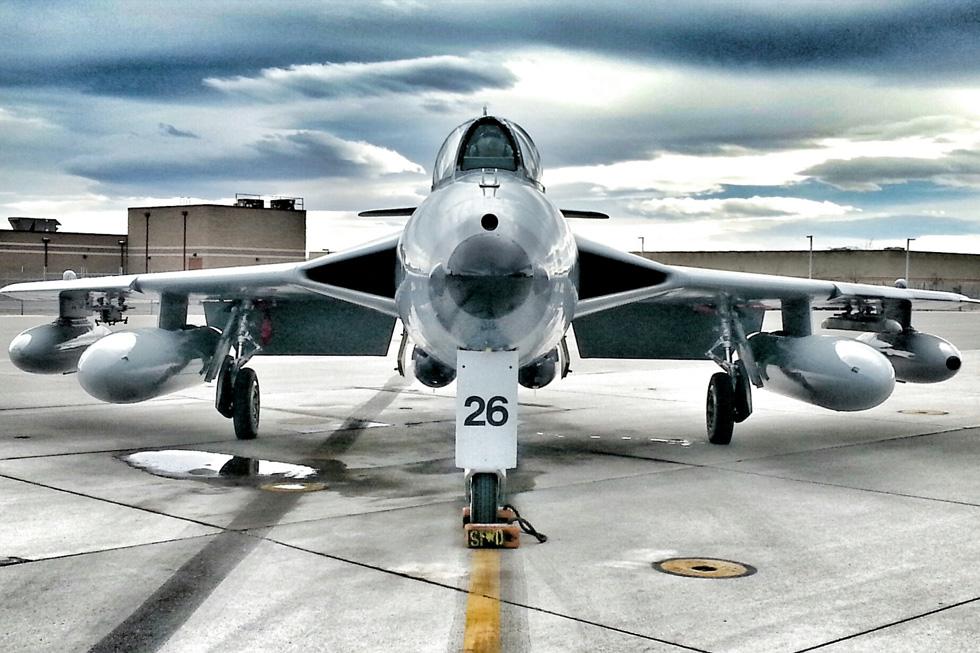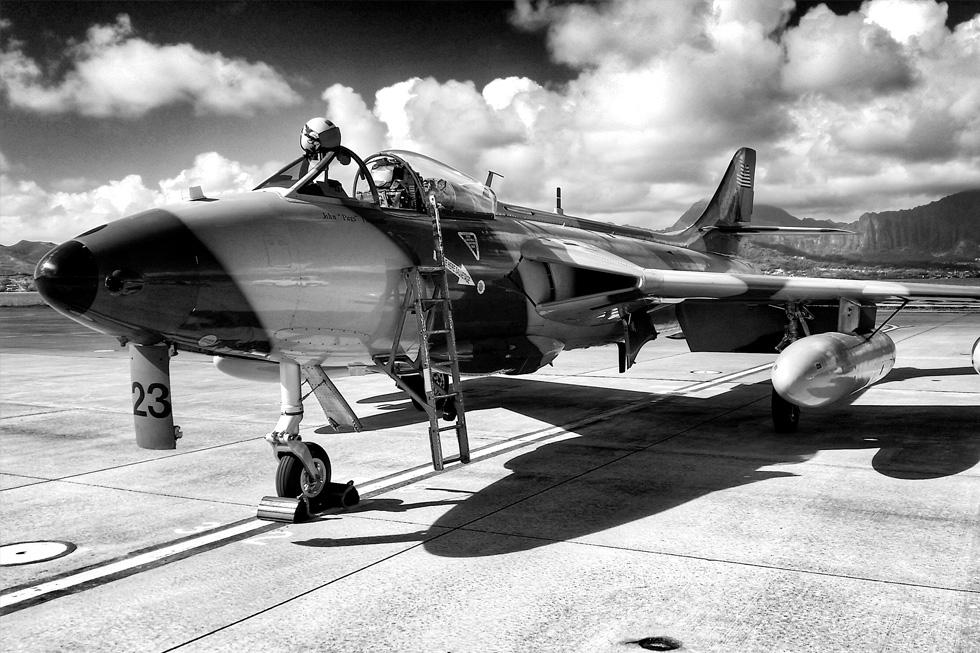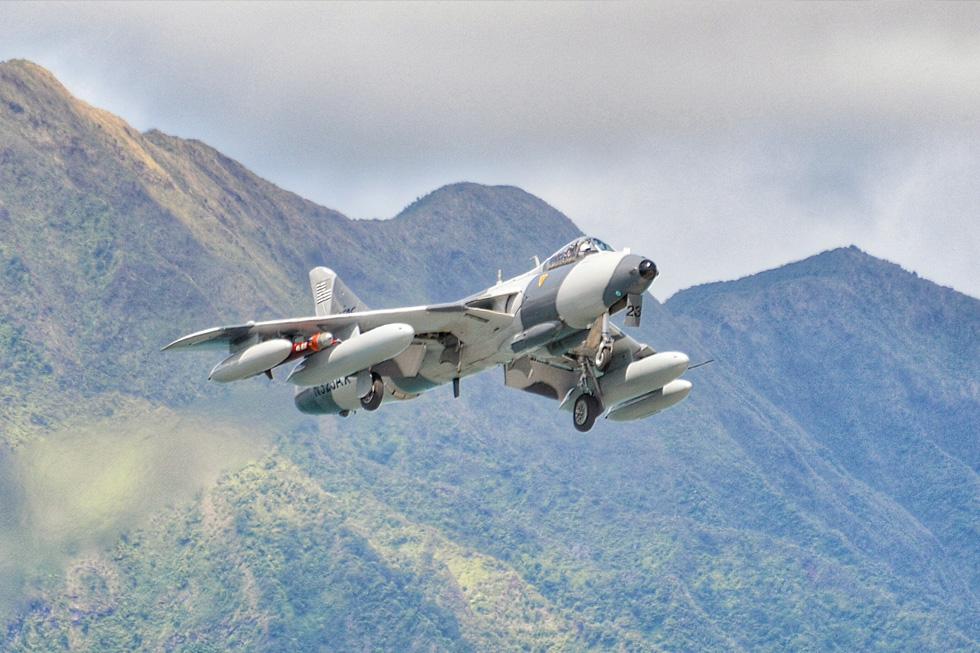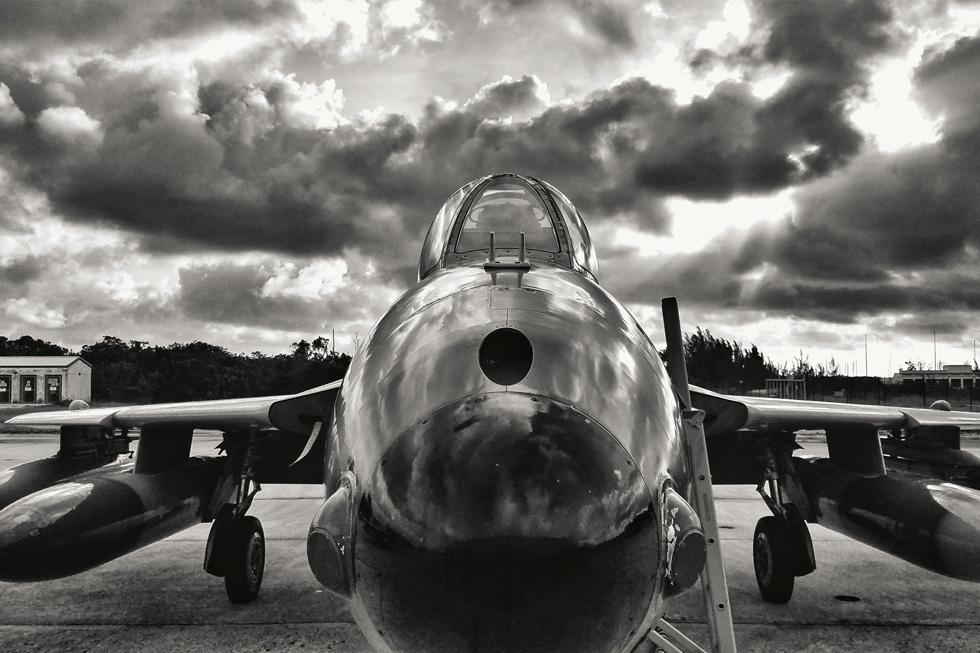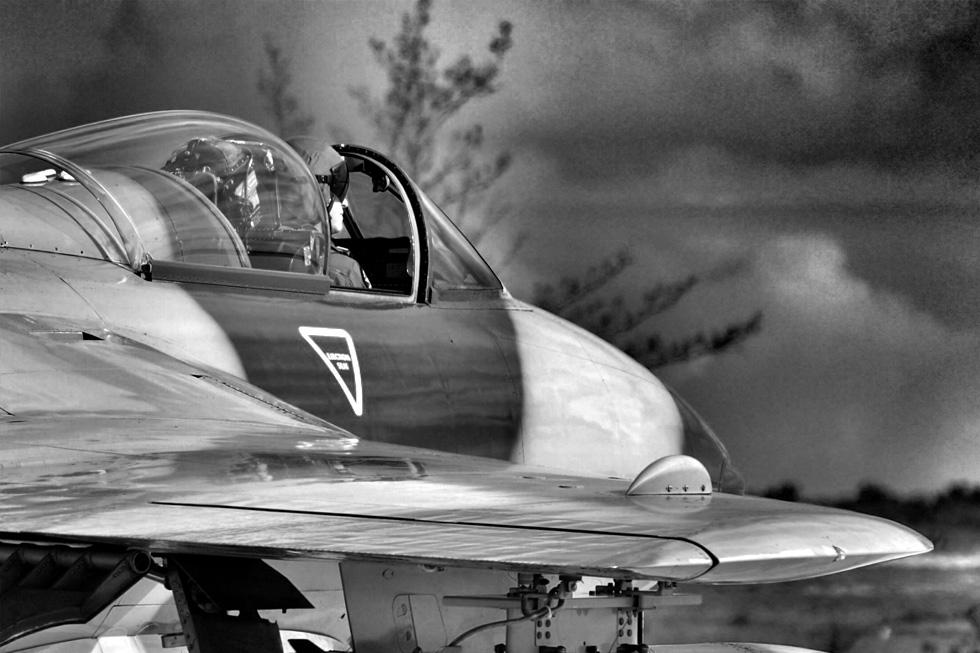
MK-58 HAWKER HUNTER
Type: Mk-58 Hawker Hunter
Max Speed: 550 KIAS
Max Range: Over 1,300 NM
G-Limits: +7.0g / -3.0g
Ceiling: 48,000 ft
Max Climb Rate: 16,000+ fpm
Endurance: 3.0 hours
If greatness in a combat aircraft equates to outstanding service longevity and extreme operational flexibility, the Mk-58 Hawker Hunter is one of the great fighter designs of all time. It is an aesthetically beautiful jet and a thoroughbred aircraft in every sense. This was almost to be expected, given that its design was penned by Sir Sydney Camm, whose other major masterpieces included the Hawker Hurricane and the Hawker Siddeley Harrier.
Originally designed as an air superiority fighter in the 1950's, the Hawker Hunter went on to become the most successful post-war British military aircraft with almost 2000 units being produced. Of these, about one third were later rebuilt by the manufacturer to zero time standard, the last leaving the Dunsfold factory in 1976. Aided by its high thrust to weight ratio, as well as inherent strength and adaptability, the design evolved from a pure air defense fighter into a superlative ground attack aircraft, the pinnacle of the design being the Swiss Mk-58 Hunters. This version was continuously updated to accommodate the latest weapons systems prior to being prematurely retired in the mid-1990's due to the end of the Cold War.
The Hawker Hunter is a transonic single seat fighter / ground attack monoplane, with swept-back wings, variable incidence tail plane, powered flying controls and cabin pressurization. It is powered by a fifteen-stage axial flow Rolls-Royce Avon MK 207 turbine engine, producing 10,150 pounds of thrust. The fuselage is of monocoque construction and manufactured in three main sections. The swept-back wings are two spar stressed skin structures covered with heavy gauge skin thereby ensuring a perfectly smooth finish and providing for the necessary stiffness of the internal structure.
ATAC deploys the Hawker Hunter in a variety of roles. The aircraft's steady performance allows ATAC to use it as a transonic fighter in the air-to-air role, as a stable, precise platform in the air-to-surface role, and the aircraft is a versatile opponent in all fleet integrated training exercises.
